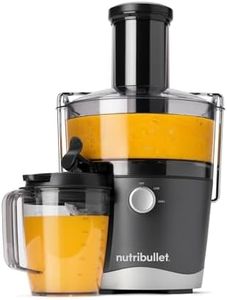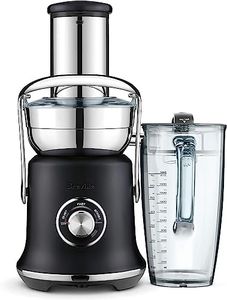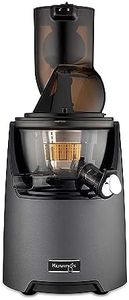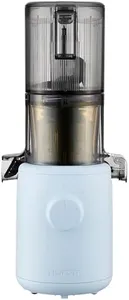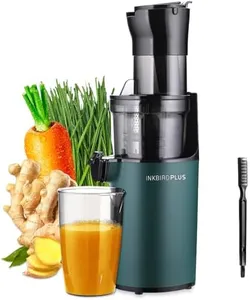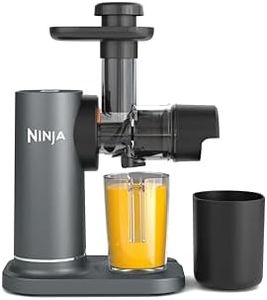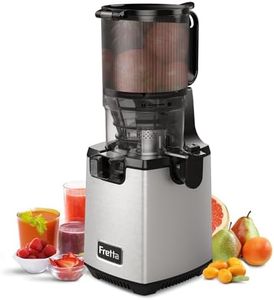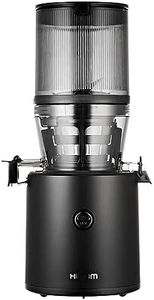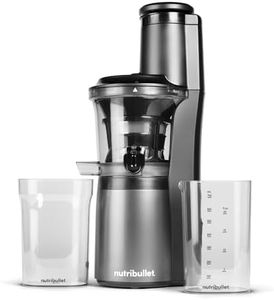We Use CookiesWe use cookies to enhance the security, performance,
functionality and for analytical and promotional activities. By continuing to browse this site you
are agreeing to our privacy policy
10 Best Cold Press Juicers
From leading brands and best sellers available on the web.Buying Guide for the Best Cold Press Juicers
Choosing a cold-press juicer can be very rewarding if you're looking for a way to enjoy fresh, nutrient-rich juices at home. The right juicer can help you extract the most juice from your fruits and vegetables while preserving vitamins and enzymes. When picking a cold-press juicer, it's important to be familiar with the most relevant features and specifications, as each can affect performance, ease of use, and the quality of the juice produced. Think about how often you'll use the juicer, what types of produce you'll juice most regularly, and the time you're willing to spend on preparation and cleaning.Juicing Method (Horizontal vs. Vertical)Cold-press juicers come mainly in two designs: horizontal and vertical. This refers to the orientation of the juicing mechanism. Horizontal juicers are usually slow and efficient for leafy greens and wheatgrass but are longer and often require more space on your counter. Vertical juicers typically offer a quicker juicing process and are easier to feed, working well for softer and harder produce, and they fit better into smaller kitchen spaces. To pick the best type for you, consider the space available in your kitchen and what kinds of fruits and vegetables you plan to juice most often.
Motor Speed (RPM - Revolutions Per Minute)Motor speed tells you how fast the juicer's auger spins. Lower speeds (around 40-80 RPM) help minimize heat and oxidization, which preserves more nutrients in your juice. Higher speeds may juice faster but can generate more heat, which might degrade some vitamins. If nutrient retention and juice shelf-life are your priorities, choose a lower speed. If speed of operation is more important and you don’t mind slight nutrient loss, a higher RPM might be acceptable.
Juice YieldJuice yield reflects how much juice you can extract from a given amount of produce. Juicers with higher yields waste less fruit and vegetables and save money in the long run. Some models excel with leafy greens, while others are better for hard veggies or soft fruits. Think about what you plan to juice most often: if you want to get the most out of leafy greens or wheatgrass, look for a machine known for high yield in those categories. If you do a mix of produce, versatility becomes important.
Feed Chute SizeThe size of the feed chute indicates how large the pieces of produce you can insert. Wider chutes can accept whole apples or large pieces, cutting down on preparation time. Narrower chutes require more chopping. If you want to save time and effort, a wider chute is more convenient, but if you don’t mind prepping your fruits and vegetables, a smaller chute can work just as well.
Ease of CleaningJuicers come with varying numbers of parts, and some are easier to disassemble and wash than others. Models that are easier to clean are more likely to be used regularly, because cleanup won’t feel like a chore. Look for juicers with dishwasher-safe parts, simple assembly, and minimal small crevices where pulp can get stuck. If you're planning to juice frequently, pick a design that offers straightforward cleaning.
Noise LevelCold-press juicers are generally quieter than traditional centrifugal juicers, but noise levels can still vary. If you want to juice early in the morning or late at night without disturbing others, look for a machine that is specifically described as quiet or designed for low-noise operation. For most casual users, average noise levels are perfectly manageable, but for households with light sleepers or in apartments, quieter machines are preferable.
Build Quality and MaterialsThe materials used in the juicer determine its durability and longevity. Good cold-press juicers are made from high-quality plastics (often BPA-free), stainless steel, and strong augers. High-quality materials are more resistant to wear and easier to clean. If you plan on juicing regularly, it's worth considering a model built from more robust materials, while occasional users might be content with lighter, simpler construction.



